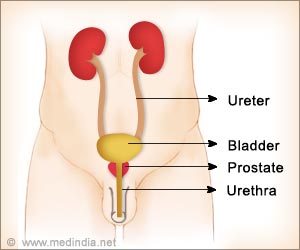IPCC’s Sixth Assessment Report by Working Group III (AR6 WGIII) on ‘Mitigation of Climate Change’ has presented financially sound multiple options for each country to cut down emissions to limit warming to 1.5 degrees alive.
Pointing out that in 2010-2019, average annual global greenhouse gas emissions were at their highest levels in human history, but the rate of growth has slowed, the WGIII report said: “Without immediate and deep emissions reductions across all sectors, limiting global warming to 1.5 degrees Celsius is beyond reach. However, there is increasing evidence of climate action that is bringing in the change.”
Since 2010, there have been sustained decreases of up to 85 percent in the costs of solar and wind energy, and batteries. An increasing range of policies and laws have enhanced energy efficiency, reduced rates of deforestation and accelerated the deployment of renewable energy, said scientists in this latest IPCC report.
“We are at a crossroads. The decisions we make now can secure a livable future. We have the tools and know-how required to limit warming,” said IPCC Chair Hoesung Lee.
The Summary for Policymakers of the IPCC Working Group III report, “Climate Change 2022: Mitigation of Climate Change” was approved on Monday by 195 member governments of the IPCC, through a virtual approval session that started on March 21.
“Having the right policies, infrastructure and technology in place to enable changes to our lifestyles and behavior can result in a 40-70 percent reduction in greenhouse gas emissions by 2050. This offers significant untapped potential,” said IPCC Working Group III Co-Chair Priyadarshi Shukla.
“The evidence also shows that these lifestyle changes can improve our health and well-being,” Shukla said.
Reducing emissions in industry will involve using materials more efficiently, reusing and recycling products and minimizing waste. For basic materials, including steel, building materials and chemicals, low- to zero-greenhouse gas production processes are at their pilot to near-commercial stage, the IPCC scientists said.
This sector accounts for about a quarter of global emissions. Achieving net zero will be challenging and will require new production processes, low and zero emissions electricity, hydrogen, and, where necessary, carbon capture and storage. Agriculture, forestry, and other land use can provide large-scale emissions reductions and also remove and store carbon dioxide at scale.
“There has been a proliferation of laws, policies and technology to help cut down on emissions and that they are having some effect. This report offers a lot of scope for looking at development pathways,” said Navroz K Dubash, one of the coordinating lead authors for one of the chapters in the report.
The development pathways taken by countries at all stages of economic development impact GHG emissions and hence shape mitigation challenges and opportunities, which vary across countries and regions.
“The report includes, for the first time, how demand for services, and social aspects of mitigation can be used in such a way to include innovation, technology development and transfer and yet put people at the center,” Joyashree Roy, another coordinating lead author, said.
The assessment of future pathways in this report covers near term (to 2030), medium term (up to 2050), and long term (to 2100) timescales, combining assessment of existing pledges and actions with an assessment of emissions reductions, and their implications, associated with long-term temperature outcomes up to the year 2100.
Pointing out that to accelerate the low-carbon transition in the Global South, developed countries should ensure higher flows of finance and technology transfer in critical areas such as renewables, electric vehicles, green hydrogen, and others, Arunabha Ghosh, CEO, Council on Energy, Environment and Water (CEEW), said: “The IPCC report is a stark reminder to all developed countries to significantly bring forward their transition to a net-zero economy. This would leave additional carbon space for countries like India to meet their development priorities on the path to achieving their net-zero target.”
Source: IANS



